Food for the Backcountry
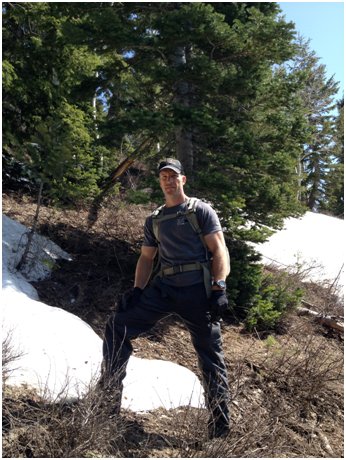
My absolute favorite type of elk hunting is backcountry DIY (Do-It-Yourself). In my opinion, no other type of hunt requires more preparation, effort, planning, and reward than this type of adventure. Effectively fueling your motor over a 5-day backcountry hunt is not always an easy task though. These type of hunts are typically very physically demanding, so to consistently punch your tag you need to be in top physical condition as well as have the right consumable items in your pack. Doing a little research (such as reading elk101.com articles) as well as doing your own pre-hunt experimentation with food can certainly make all the difference on your backcountry hunts.
The best backcountry food is lightweight, calorie-packed, and easy to cook (just add water). Each meal is different — lunch is usually heavier, more bulky, high energy, and doesn’t require cooking. Cooked dinners are typically dehydrated so they are lighter. I’ve found good backcountry food for breakfast consists of about half no-cook and half quick-cook foods.
A final critical characteristic of the “best” backcountry food is that you like it. Tasty backpacking food helps keep the spirits up during physical stress, which will certainly be the case on a 5-day backcountry hunt.
The right kind of food and enough of it will keep you energized and in the right emotional state to complete the task at hand. What goes into your pack can be a little tricky because you want to keep the weight down as much as possible, but you also need food that is nutritious and has a high calorie to weight ratio. Oreo Cookies and Little Debbie snacks aren’t going to cut it.
The average backcountry hunter in “hunting shape” will burn around 1,500-2,000 calories just sitting on the couch. Add a 50lb pack, 5-10 miles of hiking, and 2,000-3,000 of vertical elevation and you realize pretty quickly that you need to start taking in some serious fuel (i.e. calories). A backcountry hunter can easily burn 1000 calories just hiking to base camp with the scenario mentioned above.
Where to Start?
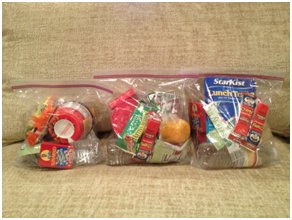 Plan and Organize!
Plan and Organize!
Food prepared for backcountry hunting needs to be packaged and organized (rationed) out to balance weight against not having enough. Food and menus can easily become the most complicated and time-consuming part of hunt planning!
A flexible meal organization system that I’ve settled on is to put a one day supply of food into a ziplock bag. This way, you can ration your food and it takes the guesswork out of what and how much I need to eat each day.
Calories and Energy
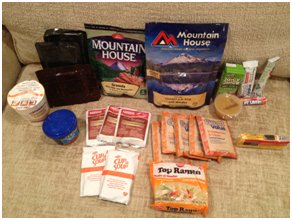 Backcountry hunting takes an amazing amount of energy. A general rule is that you will need to replenish roughly 2,500-3,000 calories per day on a typical backcountry hunt. You can obviously adjust your intake depending on your hunting tactics.
Backcountry hunting takes an amazing amount of energy. A general rule is that you will need to replenish roughly 2,500-3,000 calories per day on a typical backcountry hunt. You can obviously adjust your intake depending on your hunting tactics.
Backcountry Food Idea
Here’s a list of foods I’ve used on past backcountry hunts.
Breakfast
· Oatmeal Packets
· Cup of Fruit (plastic containers)
· Granola (Mountain House)
· Pop Tarts (Easy to grab and go)
Lunch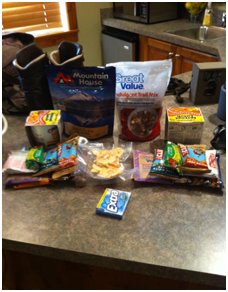
· Bagels (peanut butter & honey)
· Jerky
· Granola bars (Cliff Bars)
· Candy bars
· Dried fruit
· Trail Mix (almonds, walnuts, chocolate chips, raisins, dried fruit, etc)
· PB Crackers
· Tuna (sold in pouches now)
· Cup O Soup
· Apples
Dinner
· Mountain House
· Cup Noodles/Ramen
· Snack Pack Pudding
Liquids
· Hot cocoa
· Emergency Powder Mix / Wilderness Athlete
· Powdered lemonade or Crystal Lite
Here is a sample 5-day food menu that includes calorie and weight calculation based on the food items mentioned above.
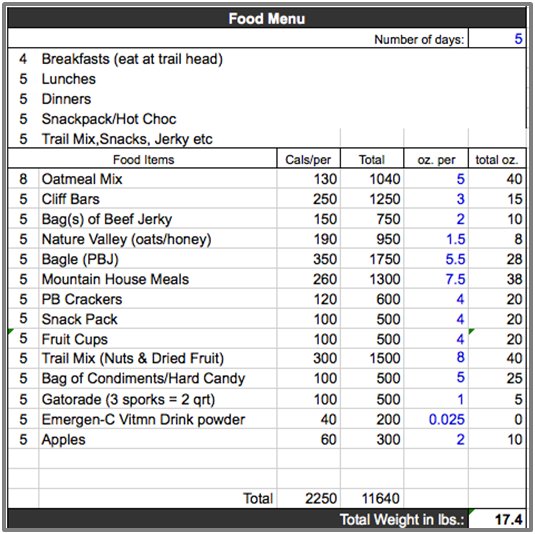
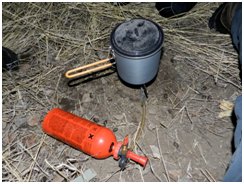 For all my quick-cook meals, I use a compact canister stove (Optimus Crux Lite or MSR Pocket Rocket) and a lightweight cook set (GSI Halulite™ Minimalist) to boil water. A Jet boil system also works really well if you’re only boiling water. If I’m hunting at high altitude or in really cold weather, I will pack a liquid fuel stove (MSR Whisper Light International). The liquid fuel stove is heavier than the canister stove, but is much more reliable at high altitude.
For all my quick-cook meals, I use a compact canister stove (Optimus Crux Lite or MSR Pocket Rocket) and a lightweight cook set (GSI Halulite™ Minimalist) to boil water. A Jet boil system also works really well if you’re only boiling water. If I’m hunting at high altitude or in really cold weather, I will pack a liquid fuel stove (MSR Whisper Light International). The liquid fuel stove is heavier than the canister stove, but is much more reliable at high altitude.
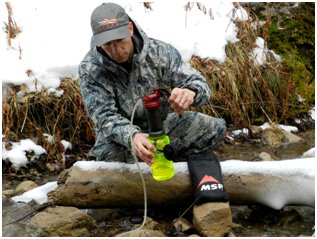 Finally, you will need a constant supply of water not only to drink, but to rehydrate your dehydrated meals and add to any other of your quick-cook meals. Water tends to be one of the heaviest items in your pack. Ideally you will want to replenish as you hunt by filtering water from natural springs and streams as you go, rather than packing the extra weight on your back. A good rule of thumb is to always top off your water supply when you have the opportunity. This can save you from expending precious energy and time searching for water sources.
Finally, you will need a constant supply of water not only to drink, but to rehydrate your dehydrated meals and add to any other of your quick-cook meals. Water tends to be one of the heaviest items in your pack. Ideally you will want to replenish as you hunt by filtering water from natural springs and streams as you go, rather than packing the extra weight on your back. A good rule of thumb is to always top off your water supply when you have the opportunity. This can save you from expending precious energy and time searching for water sources.
One final point a hunting buddy just brought to my attention – it never hurts to have a “top off the tank meal” at the trailhead before you head out. Homemade soup, fresh zucchini bread, and homemade oatmeal “hunting” cookies are some of our favorites.
Good luck on your next backcountry adventure!
